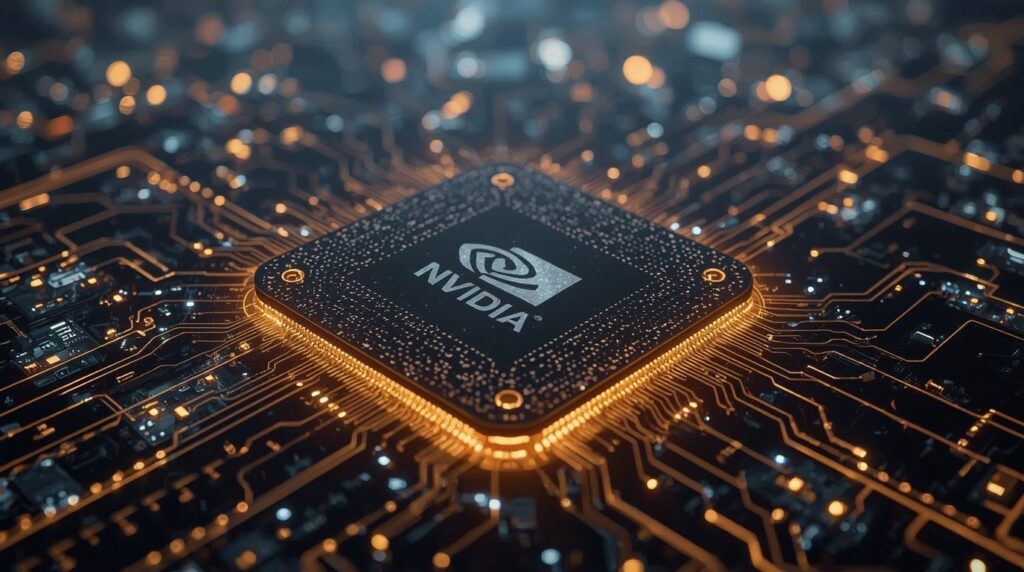Introduction to AI and Automation in Business
Artificial Intelligence (AI) and automation have become pivotal forces in transforming business operations across industries. From streamlining workflows to enhancing decision-making, these technologies bring substantial value by increasing efficiency and mitigating risks. A key area where AI and automation significantly impact businesses is cybersecurity. In recent years, the escalation of ransomware attacks has posed a critical threat, disrupting operations and causing severe financial damage. Leveraging AI-enhanced threat detection platforms offers a promising solution to these challenges.
AI-Powered Threat Detection: A New Paradigm in Cybersecurity
Traditional cybersecurity measures often struggle to keep pace with rapidly evolving cyber threats. AI-powered platforms, however, utilize machine learning algorithms and real-time data analysis to detect anomalies and potential ransomware attacks more effectively than conventional systems. These AI systems continuously learn from patterns to identify malicious activities early, enabling faster response and mitigation.
Real-World Application: Insurance Incentives for AI Adoption
The practical benefits of AI-driven cybersecurity are evidenced by the changing dynamics in the insurance sector. Insurers are increasingly offering lower premiums to companies that implement AI threat detection platforms. This financial incentive underscores the proven effectiveness of AI in reducing ransomware incidents, which in turn diminishes business disruption and mitigates reputational damage.
For example, enterprises utilizing AI cybersecurity solutions have reported substantial drops in ransomware infections, translating into significant cost savings. This shift reflects how AI not only protects companies but also directly contributes to their financial resilience and operational continuity.
Article Content (≈1000 words)The Rising Threat: Zero-Day AI Attacks
Recent analysis from cybersecurity experts suggests we are on the cusp of a new kind of cyber threat: zero-day AI attacks. As AI systems grow more autonomous and capable, risk models show that attackers may soon exploit previously unknown vulnerabilities in software or networks in highly personalized ways. Unlike typical zero-day exploits that exploit generic software flaws or bugs, these new AI-powered threats would tailor attacks to individual targets, using data about behaviour, preferences, and network configuration to evade detection. This makes traditional patch-based or signature-based defenses far less effective. The need for AI-Detection and Response (AI-DR) systems is becoming urgent. :contentReference[oaicite:0]{index=0}
In parallel, researchers warn that current defensive frameworks are not yet designed to counter adversarial AI agents that evolve. Attackers employing autonomous agents—digital systems capable of probing, learning, and executing without continuous human oversight—could orchestrate coordinated campaigns that span multiple platforms. These systems may be harder to trace, more flexible in method, and faster in execution. In response, venture capital is flowing into defensive AI tools, threat detection platforms, and defenses that combine algorithmic transparency, anomaly detection, and proactive incident mitigation. :contentReference[oaicite:1]{index=1}
China’s Shift to In-House AI Chip Production
Amid escalating export restrictions by the U.S. aimed at curtailing advanced AI hardware access, two of China’s biggest tech players — **Alibaba** and **Baidu** — have started using domestically developed AI chips to train their models. Alibaba has already begun deploying its own chip designs for smaller models earlier this year; Baidu is testing its Kunlun P800 chip for newer versions of its large “Ernie” model. While neither company has completely phased out using Nvidia chips (especially for the most advanced workloads), the shift is gaining traction. :contentReference[oaicite:2]{index=2}
This development reflects more than just a technical pivot. It’s a strategic move to assert technological autonomy in a fast-escalating AI hardware supply chain conflict. Dependence on foreign advanced GPUs (especially from U.S. firms) has become a point of vulnerability in geopolitics. Investments in home-grown chips help ensure more control over production, mitigate risks of export embargoes, and enable local R&D ecosystems to grow. However, it also comes with challenges: performance gaps, scaling up fabrication, supply chain logistics, and the need for robust software tooling to support new chip architectures. :contentReference[oaicite:3]{index=3}
Intersection: How These Shifts Affect Business Security & Strategy
These two developments — the rise of AI-powered attacks and domestic chip production in China — intersect in ways that matter deeply for business strategy and cybersecurity. Organizations relying on international supply chains must now assess hardware provenance more carefully. Chips from domestic or local sources may offer reduced risk of export bans but might lag in performance or optimization, increasing development effort. Conversely, being too dependent on foreign hardware or software exposes firms to political risk and supply disruptions. Incorporating AI-DR systems is becoming less optional for any firm concerned with cybersecurity, especially those with sensitive intellectual property, customer data, or operations in regulated sectors.
Steps for Integrating AI and Automation in Business Security
Adopting AI-enhanced threat detection involves several strategic steps:
- Assessment: Evaluate existing cybersecurity infrastructure to identify vulnerability points and determine AI integration scope.
- Selection: Choose AI threat detection platforms aligned with business size, industry requirements, and technical compatibility.
- Implementation: Deploy AI tools incrementally, ensuring seamless integration with current systems and minimal disruption.
- Training: Equip IT teams with the necessary skills to manage AI systems and interpret alerts effectively.
- Monitoring and Optimization: Continuously monitor system performance and update AI algorithms to adapt to new threat vectors.
Leveraging Automation Beyond Security
Beyond enhancing threat detection, automation can be applied to various business processes such as customer service, supply chain management, and compliance monitoring. These applications free human resources from repetitive tasks, allowing focused attention on strategic objectives and innovation.
Risks and Challenges of AI and Automation in Business
Despite the advantages, integrating AI and automation is not without risks. Some notable challenges include:
- Data Privacy Concerns: AI systems often require access to extensive data, necessitating strong privacy controls to prevent misuse.
- Implementation Costs: Initial investment and maintenance expenses can be substantial, especially for small-to-medium enterprises.
- System Dependence: Over-reliance on automated systems might induce complacency, reducing vigilance against novel threats.
- False Positives: AI algorithms may occasionally generate incorrect threat alerts, potentially disrupting operations.
Addressing these concerns requires careful planning, robust governance frameworks, and continuous human oversight to balance automation benefits with potential risks.
Business Value Generated by AI and Automation
Incorporating AI and automation into business processes yields multifaceted value:
- Operational Efficiency: Automation streamlines routine tasks, reducing errors and accelerating workflows.
- Cost Savings: Fewer security breaches and insurance discounts decrease overall operational expenses.
- Competitive Advantage: Enhanced security and efficiency improve customer trust and market positioning.
- Scalability: Automated solutions allow businesses to scale operations rapidly without proportional increases in cost or risk.
Ultimately, AI-powered threat detection and automation act as enablers, safeguarding business continuity while supporting scalable growth.
Summary
The dual trends of looming zero-day AI threats and China’s shift toward internal AI hardware development represent critical inflection points. Businesses now need to prepare not just for evolving cybersecurity risk, but for geopolitical and supply chain pressures that can materially impact technology strategy. Adopting AI-powered defense tools, vetting hardware sources, and maintaining agility in AI infrastructure choices are no longer optional investments but core components of risk management. Striking the balance between speed, resilience, and ethical oversight will determine which organizations thrive in this increasingly complex AI landscape.
[1][2]
References
- Zero-day AI attacks & AI-DR urgency ([Axios AI+](https://www.axios.com/newsletters/axios-ai-plus-eafb70c7-71fb-4dab-ba52-5006df10529e))
- Alibaba, Baidu start using proprietary chips for AI training ([Reuters](https://www.reuters.com/world/china/alibaba-baidu-begin-using-own-chips-train-ai-models-information-reports-2025-09-11))

